Qirui Yang
Efficient Speculative Decoding for Llama at Scale: Challenges and Solutions
Aug 11, 2025Abstract:Speculative decoding is a standard method for accelerating the inference speed of large language models. However, scaling it for production environments poses several engineering challenges, including efficiently implementing different operations (e.g., tree attention and multi-round speculative decoding) on GPU. In this paper, we detail the training and inference optimization techniques that we have implemented to enable EAGLE-based speculative decoding at a production scale for Llama models. With these changes, we achieve a new state-of-the-art inference latency for Llama models. For example, Llama4 Maverick decodes at a speed of about 4 ms per token (with a batch size of one) on 8 NVIDIA H100 GPUs, which is 10% faster than the previously best known method. Furthermore, for EAGLE-based speculative decoding, our optimizations enable us to achieve a speed-up for large batch sizes between 1.4x and 2.0x at production scale.
DSDNet: Raw Domain Demoiréing via Dual Color-Space Synergy
Apr 22, 2025Abstract:With the rapid advancement of mobile imaging, capturing screens using smartphones has become a prevalent practice in distance learning and conference recording. However, moir\'e artifacts, caused by frequency aliasing between display screens and camera sensors, are further amplified by the image signal processing pipeline, leading to severe visual degradation. Existing sRGB domain demoir\'eing methods struggle with irreversible information loss, while recent two-stage raw domain approaches suffer from information bottlenecks and inference inefficiency. To address these limitations, we propose a single-stage raw domain demoir\'eing framework, Dual-Stream Demoir\'eing Network (DSDNet), which leverages the synergy of raw and YCbCr images to remove moir\'e while preserving luminance and color fidelity. Specifically, to guide luminance correction and moir\'e removal, we design a raw-to-YCbCr mapping pipeline and introduce the Synergic Attention with Dynamic Modulation (SADM) module. This module enriches the raw-to-sRGB conversion with cross-domain contextual features. Furthermore, to better guide color fidelity, we develop a Luminance-Chrominance Adaptive Transformer (LCAT), which decouples luminance and chrominance representations. Extensive experiments demonstrate that DSDNet outperforms state-of-the-art methods in both visual quality and quantitative evaluation, and achieves an inference speed $\mathrm{\textbf{2.4x}}$ faster than the second-best method, highlighting its practical advantages. We provide an anonymous online demo at https://xxxxxxxxdsdnet.github.io/DSDNet/.
NTIRE 2025 Challenge on Day and Night Raindrop Removal for Dual-Focused Images: Methods and Results
Apr 19, 2025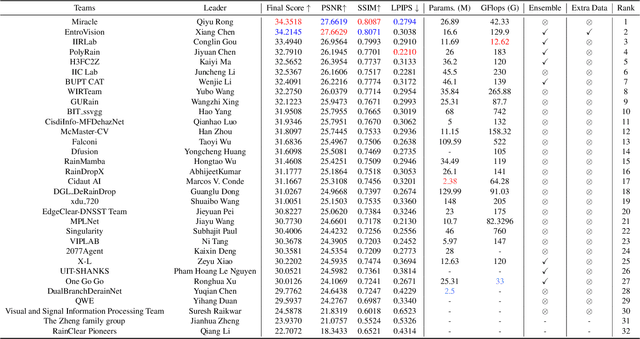
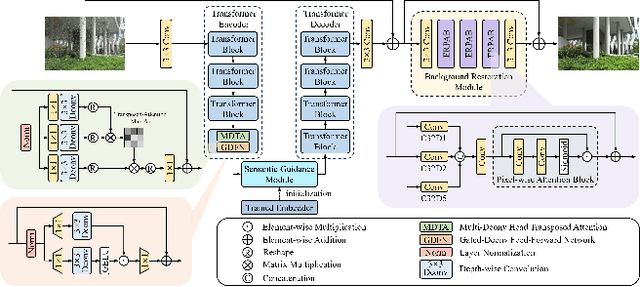
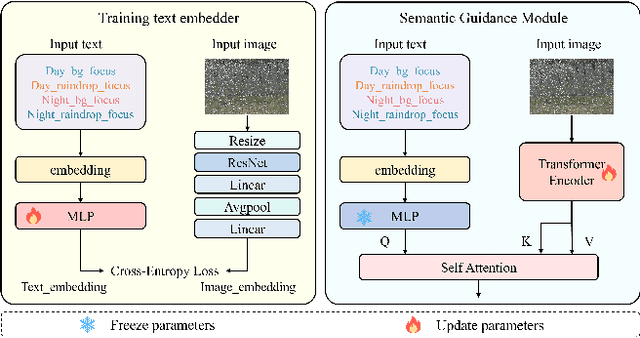
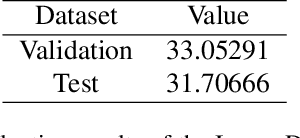
Abstract:This paper reviews the NTIRE 2025 Challenge on Day and Night Raindrop Removal for Dual-Focused Images. This challenge received a wide range of impressive solutions, which are developed and evaluated using our collected real-world Raindrop Clarity dataset. Unlike existing deraining datasets, our Raindrop Clarity dataset is more diverse and challenging in degradation types and contents, which includes day raindrop-focused, day background-focused, night raindrop-focused, and night background-focused degradations. This dataset is divided into three subsets for competition: 14,139 images for training, 240 images for validation, and 731 images for testing. The primary objective of this challenge is to establish a new and powerful benchmark for the task of removing raindrops under varying lighting and focus conditions. There are a total of 361 participants in the competition, and 32 teams submitting valid solutions and fact sheets for the final testing phase. These submissions achieved state-of-the-art (SOTA) performance on the Raindrop Clarity dataset. The project can be found at https://lixinustc.github.io/CVPR-NTIRE2025-RainDrop-Competition.github.io/.
Bayesian Neural Networks for One-to-Many Mapping in Image Enhancement
Jan 24, 2025



Abstract:In image enhancement tasks, such as low-light and underwater image enhancement, a degraded image can correspond to multiple plausible target images due to dynamic photography conditions, such as variations in illumination. This naturally results in a one-to-many mapping challenge. To address this, we propose a Bayesian Enhancement Model (BEM) that incorporates Bayesian Neural Networks (BNNs) to capture data uncertainty and produce diverse outputs. To achieve real-time inference, we introduce a two-stage approach: Stage I employs a BNN to model the one-to-many mappings in the low-dimensional space, while Stage II refines fine-grained image details using a Deterministic Neural Network (DNN). To accelerate BNN training and convergence, we introduce a dynamic \emph{Momentum Prior}. Extensive experiments on multiple low-light and underwater image enhancement benchmarks demonstrate the superiority of our method over deterministic models.
Learning Differential Pyramid Representation for Tone Mapping
Dec 02, 2024



Abstract:Previous tone mapping methods mainly focus on how to enhance tones in low-resolution images and recover details using the high-frequent components extracted from the input image. These methods typically rely on traditional feature pyramids to artificially extract high-frequency components, such as Laplacian and Gaussian pyramids with handcrafted kernels. However, traditional handcrafted features struggle to effectively capture the high-frequency components in HDR images, resulting in excessive smoothing and loss of detail in the output image. To mitigate the above issue, we introduce a learnable Differential Pyramid Representation Network (DPRNet). Based on the learnable differential pyramid, our DPRNet can capture detailed textures and structures, which is crucial for high-quality tone mapping recovery. In addition, to achieve global consistency and local contrast harmonization, we design a global tone perception module and a local tone tuning module that ensure the consistency of global tuning and the accuracy of local tuning, respectively. Extensive experiments demonstrate that our method significantly outperforms state-of-the-art methods, improving PSNR by 2.58 dB in the HDR+ dataset and 3.31 dB in the HDRI Haven dataset respectively compared with the second-best method. Notably, our method exhibits the best generalization ability in the non-homologous image and video tone mapping operation. We provide an anonymous online demo at https://xxxxxx2024.github.io/DPRNet/.
Learning Adaptive Lighting via Channel-Aware Guidance
Dec 02, 2024



Abstract:Learning lighting adaption is a key step in obtaining a good visual perception and supporting downstream vision tasks. There are multiple light-related tasks (e.g., image retouching and exposure correction) and previous studies have mainly investigated these tasks individually. However, we observe that the light-related tasks share fundamental properties: i) different color channels have different light properties, and ii) the channel differences reflected in the time and frequency domains are different. Based on the common light property guidance, we propose a Learning Adaptive Lighting Network (LALNet), a unified framework capable of processing different light-related tasks. Specifically, we introduce the color-separated features that emphasize the light difference of different color channels and combine them with the traditional color-mixed features by Light Guided Attention (LGA). The LGA utilizes color-separated features to guide color-mixed features focusing on channel differences and ensuring visual consistency across channels. We introduce dual domain channel modulation to generate color-separated features and a wavelet followed by a vision state space module to generate color-mixed features. Extensive experiments on four representative light-related tasks demonstrate that LALNet significantly outperforms state-of-the-art methods on benchmark tests and requires fewer computational resources. We provide an anonymous online demo at https://xxxxxx2025.github.io/LALNet/.
NTIRE 2024 Challenge on Night Photography Rendering
Jun 18, 2024



Abstract:This paper presents a review of the NTIRE 2024 challenge on night photography rendering. The goal of the challenge was to find solutions that process raw camera images taken in nighttime conditions, and thereby produce a photo-quality output images in the standard RGB (sRGB) space. Unlike the previous year's competition, the challenge images were collected with a mobile phone and the speed of algorithms was also measured alongside the quality of their output. To evaluate the results, a sufficient number of viewers were asked to assess the visual quality of the proposed solutions, considering the subjective nature of the task. There were 2 nominations: quality and efficiency. Top 5 solutions in terms of output quality were sorted by evaluation time (see Fig. 1). The top ranking participants' solutions effectively represent the state-of-the-art in nighttime photography rendering. More results can be found at https://nightimaging.org.
MIPI 2024 Challenge on Nighttime Flare Removal: Methods and Results
Apr 30, 2024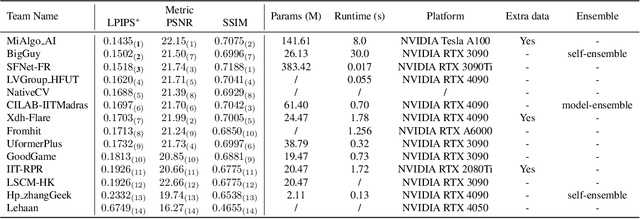

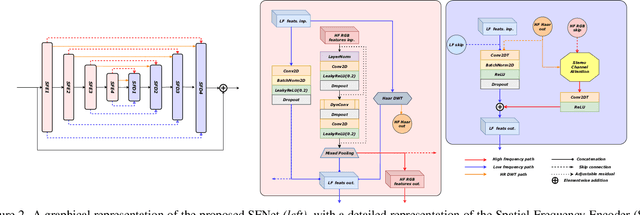
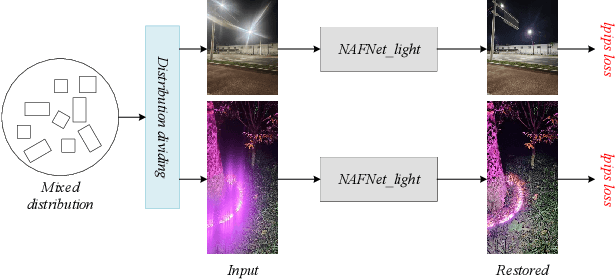
Abstract:The increasing demand for computational photography and imaging on mobile platforms has led to the widespread development and integration of advanced image sensors with novel algorithms in camera systems. However, the scarcity of high-quality data for research and the rare opportunity for in-depth exchange of views from industry and academia constrain the development of mobile intelligent photography and imaging (MIPI). Building on the achievements of the previous MIPI Workshops held at ECCV 2022 and CVPR 2023, we introduce our third MIPI challenge including three tracks focusing on novel image sensors and imaging algorithms. In this paper, we summarize and review the Nighttime Flare Removal track on MIPI 2024. In total, 170 participants were successfully registered, and 14 teams submitted results in the final testing phase. The developed solutions in this challenge achieved state-of-the-art performance on Nighttime Flare Removal. More details of this challenge and the link to the dataset can be found at https://mipi-challenge.org/MIPI2024/.
Learning to See Low-Light Images via Feature Domain Adaptation
Dec 20, 2023Abstract:Raw low light image enhancement (LLIE) has achieved much better performance than the sRGB domain enhancement methods due to the merits of raw data. However, the ambiguity between noisy to clean and raw to sRGB mappings may mislead the single-stage enhancement networks. The two-stage networks avoid ambiguity by decoupling the two mappings but usually have large computing complexity. To solve this problem, we propose a single-stage network empowered by Feature Domain Adaptation (FDA) to decouple the denoising and color mapping tasks in raw LLIE. The denoising encoder is supervised by the clean raw image, and then the denoised features are adapted for the color mapping task by an FDA module. We propose a Lineformer to serve as the FDA, which can well explore the global and local correlations with fewer line buffers (friendly to the line-based imaging process). During inference, the raw supervision branch is removed. In this way, our network combines the advantage of a two-stage enhancement process with the efficiency of single-stage inference. Experiments on four benchmark datasets demonstrate that our method achieves state-of-the-art performance with fewer computing costs (60% FLOPs of the two-stage method DNF). Our codes will be released after the acceptance of this work.
Efficient HDR Reconstruction from Real-World Raw Images
Jun 22, 2023



Abstract:High dynamic range (HDR) imaging is still a significant yet challenging problem due to the limited dynamic range of generic image sensors. Most existing learning-based HDR reconstruction methods take a set of bracketed-exposure sRGB images to extend the dynamic range, and thus are computational- and memory-inefficient by requiring the Image Signal Processor (ISP) to produce multiple sRGB images from the raw ones. In this paper, we propose to broaden the dynamic range from the raw inputs and perform only one ISP processing for the reconstructed HDR raw image. Our key insights are threefold: (1) we design a new computational raw HDR data formation pipeline and construct the first real-world raw HDR dataset, RealRaw-HDR; (2) we develop a lightweight-efficient HDR model, RepUNet, using the structural re-parameterization technique; (3) we propose a plug-and-play motion alignment loss to mitigate motion misalignment between short- and long-exposure images. Extensive experiments demonstrate that our approach achieves state-of-the-art performance in both visual quality and quantitative metrics.
 Add to Chrome
Add to Chrome Add to Firefox
Add to Firefox Add to Edge
Add to Edge